This is the time of year that I would consider to be the beginning of my annual baking adventure, an opening of a panettone baking season. In the baking enthusiast world which obviously I am part of, the fall and winter are generally speaking the time to rise up to this great and satisfying challenge. The season lasts roughly from early October until the end of April next year. This is the time dedicated to experimenting and fine tuning the techniques. The end product, result of a true craftsmanship is artisan style panettone!
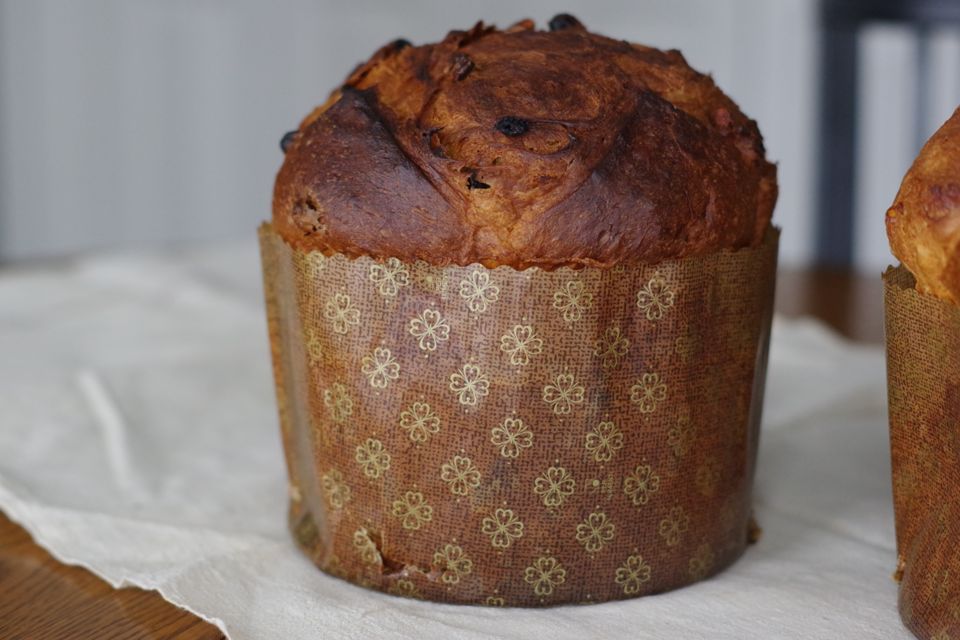
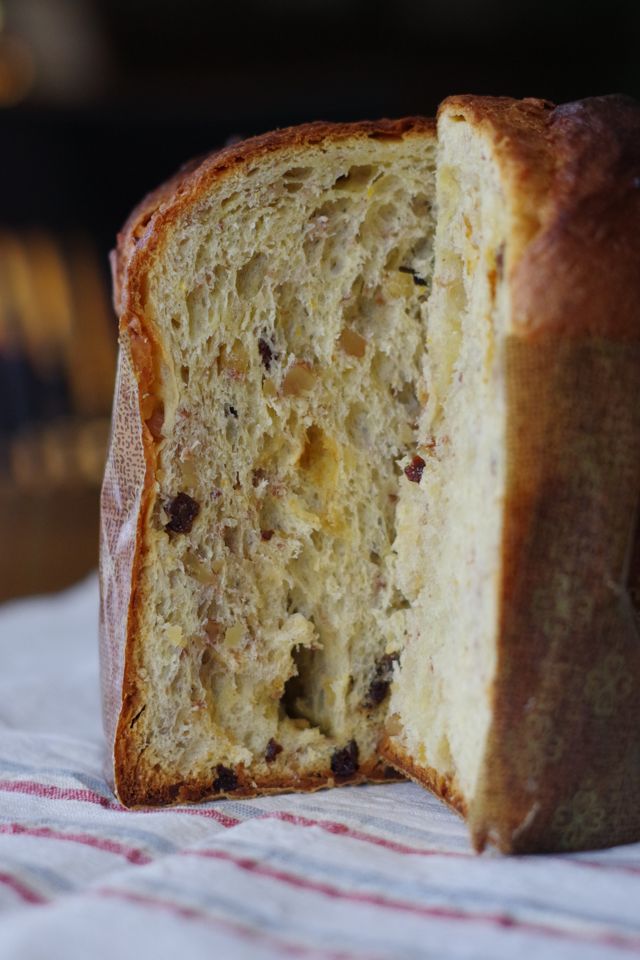
Without any doubt making panettone is the most complex and challenging sourdough endeavor any baker can undertake! Everything has to be right, every step of the process! The failure possibility lurks at every corner and uncertainty lingers in baker’s mind, all until the very last moment. Until the skewers are passed through the bottoms of panettone molds, panettones flipped upside down….and hopefully they stay in and don’t fall out of the mold.
Developing and managing stiff sourdough starter which is known as “pasta madre” or “lievito madre” (translated from Italian as mother yeast) is very challenging skill in its own right. It takes at least about a month to develop stiff starter to the stage with right leavening power and then unknown amount of time to fine tune it. The right ratio of acetic and lactic acid, overall level of acidity while also maintaining a leavening power that will consistently have starter triple by volume in 3.5-4 hours.
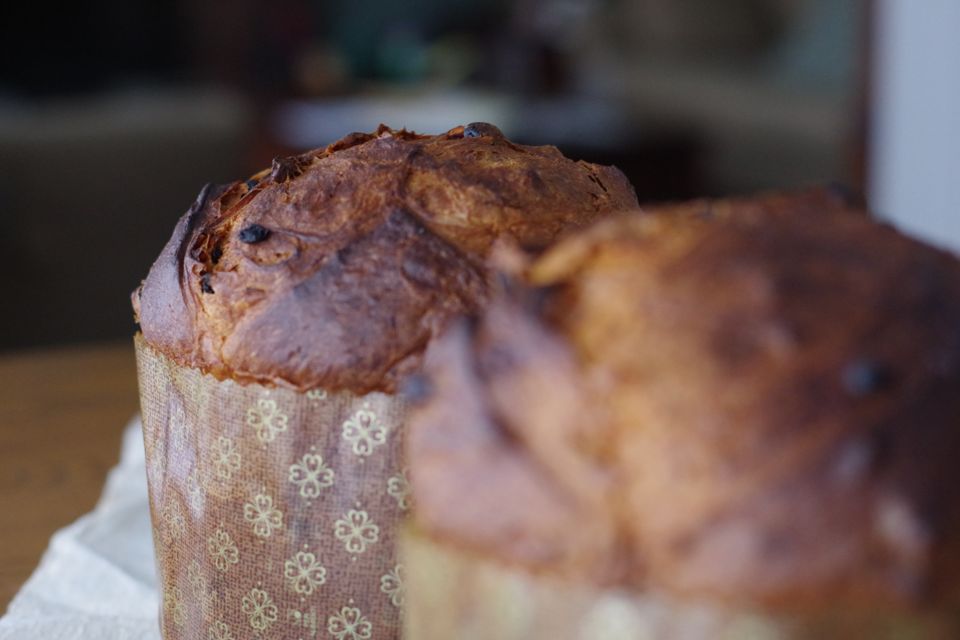
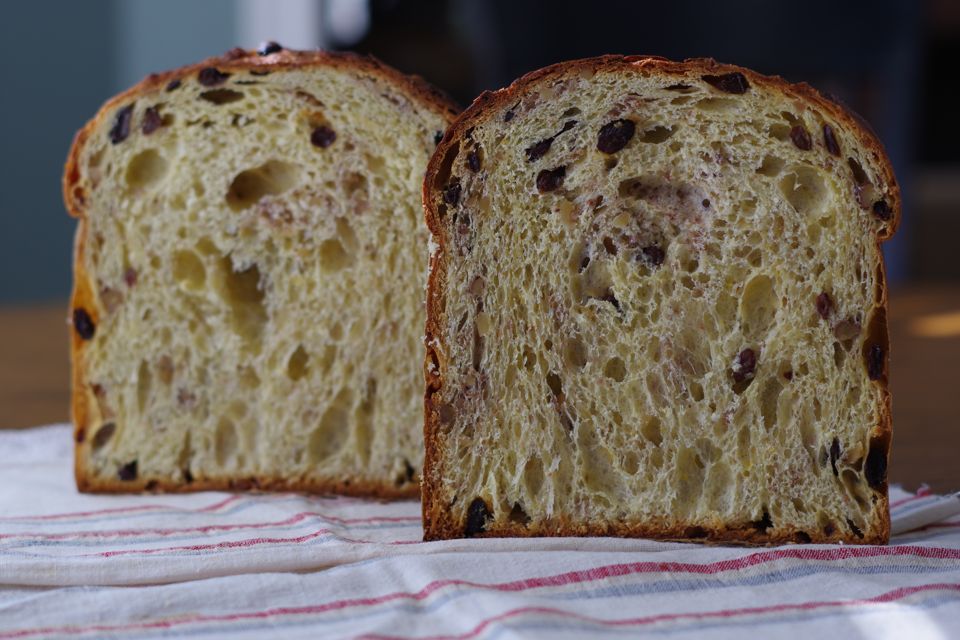
It is hard, there is no doubt about it. This challenge requires dedication, persistency, analytical mind, and above all love for baking and appreciation of good food! Like anything else in life: the higher the goal, the bigger the challenge, inevitably leads to bigger invested effort and ultimately results with higher satisfaction! Perfectly baked panettone is our reward for all the hard work!
What is so great about Panettone, why invest all this time and effort?
The taste of Panettone can be summed up in a single word: divine! I haven’t met anyone yet that tasted it and remained unaffected. My greatest joy is to serve freshly baked panettone and watch the reaction. Without a miss it is a broad smile followed with approving statement, something like: “This is phenomenal!”. I already know it, but I am happy to spread the joy!
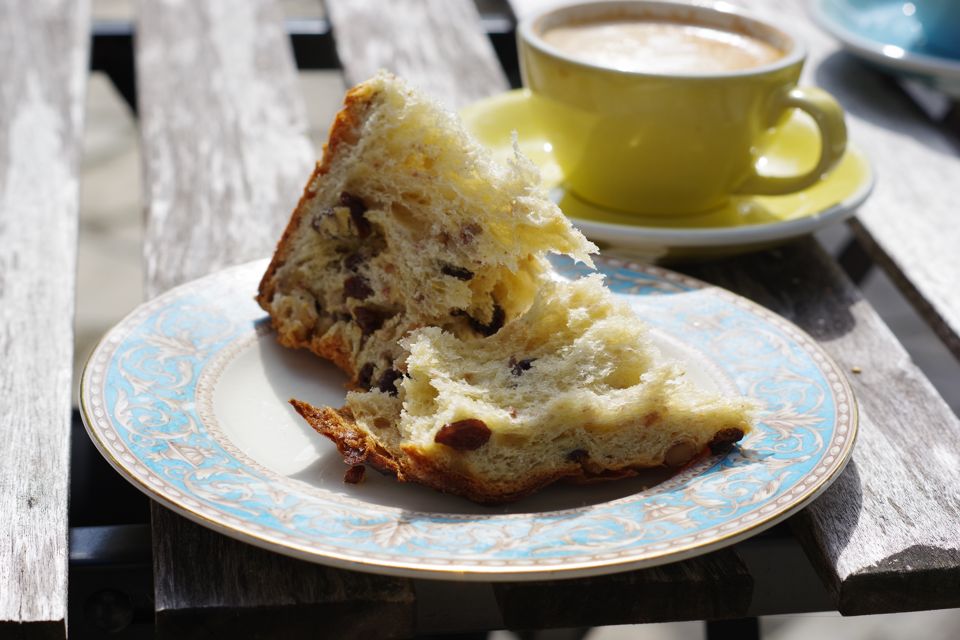
In this blog post I will concentrate strictly on a dough recipe assuming that one already has good, healthy and well developed mother yeast. Perhaps in one of the following posts I will go through the process of developing and maintaining lievito madre. That is a finicky process that definitively requires some guidance and above anything else the experience. It is very simple process actually, but one has to be ready to learn and fail many times along the way. The importance of good lievito madre can not be overstated. Perhaps 90% of panettone baking failures are associated with a quality of mother yeast!
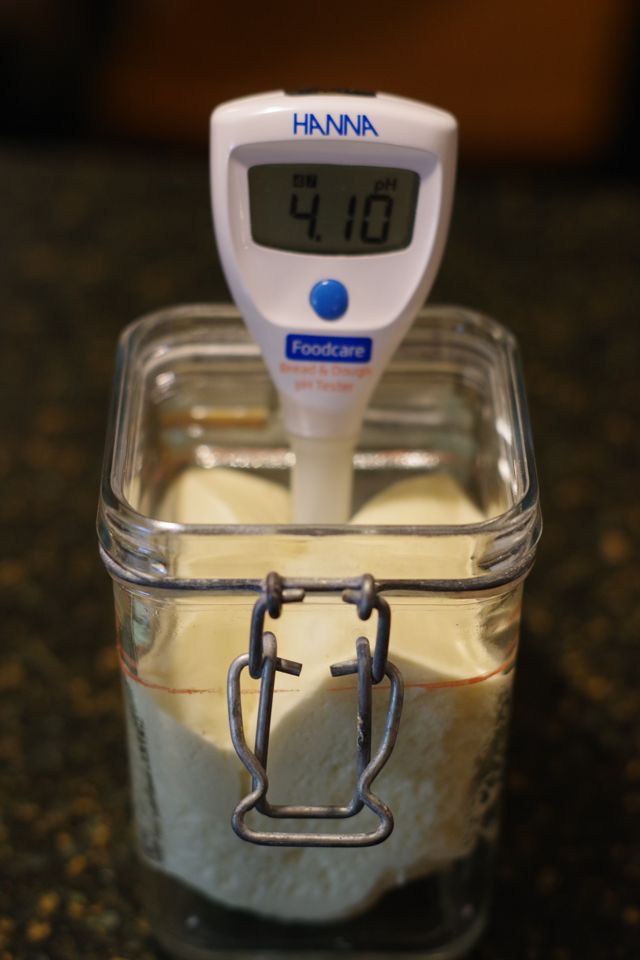
Piergiorgio Giorilli is a famous Italian master pastry chef with long and successful carrier. He is one of leading names when it comes to world of panettone baking and this is one of his recipes.
Among panettone bakers Giorilli panettone recipe is prized as being the most forgiving and the easiest recipe to master. For that is often suggested as a number one recipe for a newbie panettone baker. Interestingly in this recipe master baker Giorilli doesn’t use customary candied fruit ingredients as orange and lemon peel, but instead uses chopped walnuts and raisins. However, this panettone still has such a beautiful fruity aroma which is successfully derived just from flavorings used in the recipe.
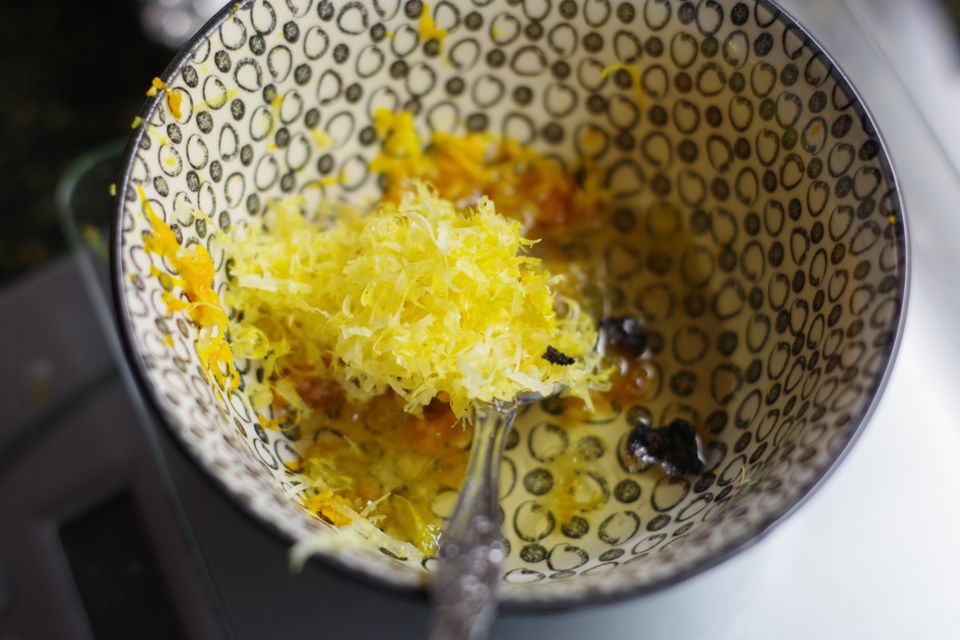
This is my fourth successful attempt with this recipe and I love it! The hardest part I find is the waiting time of 3-4 days to allow panettone flavours to mature before it should be cut and tasted. It is a wonderful experience worth every minute of invested effort!

Due to my personal circumstances and limitations I adjusted all the ingredients amounts to suit recipe for two 750g panettones.
Few important suggestions to keep an eye on:
- Watch the dough temperature. It should never go above 30°C or you will risk gluten degradation and the dough will fall apart. If the temperature is high, cover the dough and refrigerate for 30 minutes before proceeding further.
- You need accurate and reliable temperature control during dough fermentation process. For that you will need a dough proofer. You can either buy one or if inclined build one yourself as I did. I simply used large Styrofoam cooler box, heated mat, PID controller and pair of cooling racks used as a shelf.
- Use bread flour with 13% protein or higher. I used Boreal Premium Organic Flour (La Milanaise Mill-Quebec) with 13.3% protein content.
- Your starter or lievito madre has to be very active. Refreshed lievito madre has to triple by volume every 4 hours, 3 times before making Primo impasto (first dough). Use the same flour for starter feedings as for panettone making.
- Do each step in sequence and watch the gluten development before proceeding to next step.
- Don’t overwork the dough.
- Measure and prepare all the ingredients before start mixing.
- Prepare 4 skewers, two 750g panettone molds and where you will cool off the panettones, once they are baked, pierced and inverted.
- If possible use a baking stone to more closely replicate brick oven environment.
I hope you enjoy the recipe!
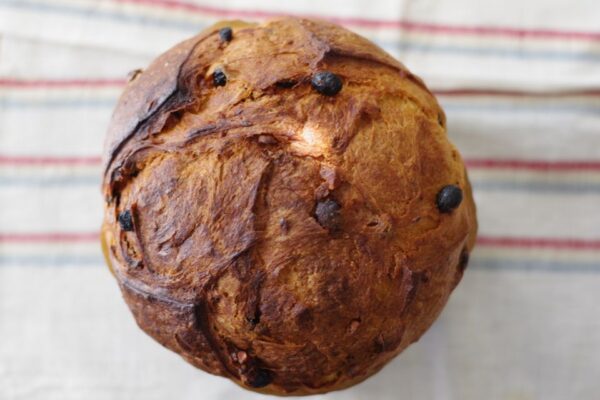
| Prep Time | 2 hours |
| Cook Time | 45 minutes |
| Passive Time | 19 hours |
| Servings |
Panettone
|
- 104 g Lievito Madre Italian sourdough starter
- 113 g granulated sugar
- 180 g filtered water
- 81 g egg yolks
- 108 g unsalted butter softened
- 360 g unbleached bread flour 14% protein or higher, sifted
- 90 g unbleached bread flour 14% protein or higher, sifted
- 99 g granulated sugar
- 6 g fine sea salt
- 144 g egg yolks
- 180 g unsalted butter softened
- 3 g barley malt syrup
- 14 g melted butter
- 207 g sultana raisins
- 135 g chopped walnuts
- 23 g acacia honey
- 1/2 vanilla bean seeds scraped
- 1 organic lemon zest
- 1 organic orange zest
Ingredients
Day 1- Primo Impasto (1st dough)
Day 2 - Secondo Impasto (2nd dough)
Aromatic Mix
|

|
- Into a bowl of stand mixer add flour, lievito madre and water. Mix at medium low speed about 15 minutes or until the dough is formed.
- In increments add sugar to the dough. Add new increment only after the previously added amount is absorbed by the dough.
- In small increments add the egg yolks. Add new increment only after the previously added amount is absorbed by the dough.
- In small increments add softened butter. Add new increment only after the previously added amount is absorbed by the dough.
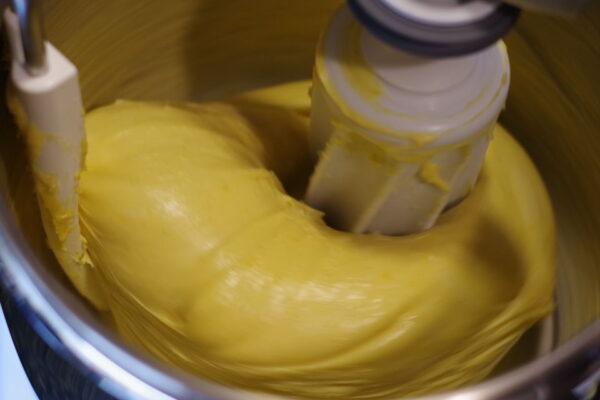
- Mix the dough until smooth but not overworked, test for a window pane to verify proper gluten development. The complete mixing operation up to this point should take no longer then about 25 minutes.
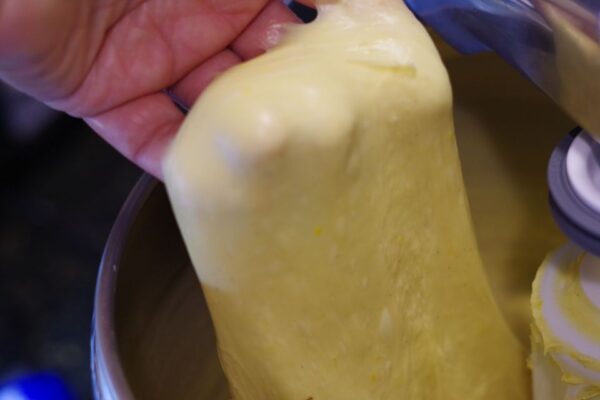
- Place the dough into covered container and keep in dough proofer for 10-12 hours at temperature of 24/25°C (75/77°F) or until dough tripled by volume.
- Into a bowl of stand mixer add first dough and flour, mix at medium low speed for about 15 minutes.
- Add slowly sugar in small increments making sure it is absorbed before new increment addition.
- Add half of the egg yolks, add salt and the aromatic mix. Mix until everything is incorporated and you obtain a smooth and homogenous dough .
- Add the other half of egg yolks, mix until incorporated.
- Add softened butter in small increments until fully incorporated. Mix well until the dough is smooth.
- Add melted butter to the dough following with raisins and chopped walnuts. Mix until fully incorporated.
- This whole operation should last about 45 to 50 minutes.
- Remove the dough from mixer, place in a covered container and let rest for 30 minutes at room temperature.
- Weigh and divide the dough into two equal parts. Shape each part into a ball and cover with buttered stretch wrap. Let rest for 35/40 minutes.

- Round each ball tightly and place into separate 750g paper molds.
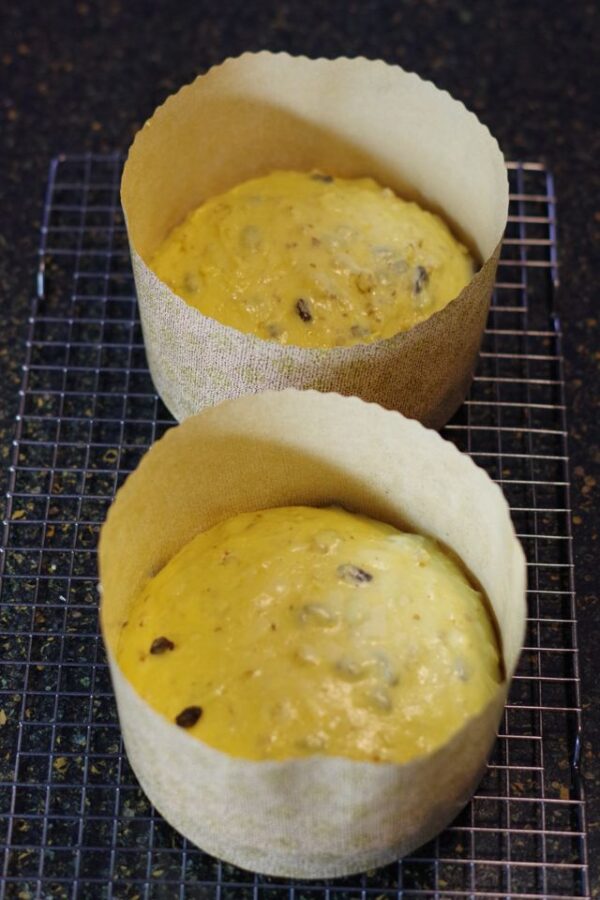
- Cover the molds and keep in dough proofer for 6-7 hours at 28/30°C (82/86°F) or until the top of dough dome passes the edge of the mold for few millimeters. Remove cover from the molds when the dough reaches 1.5" below the mold edge. This way the dough will create a crust which will make it easier to score.
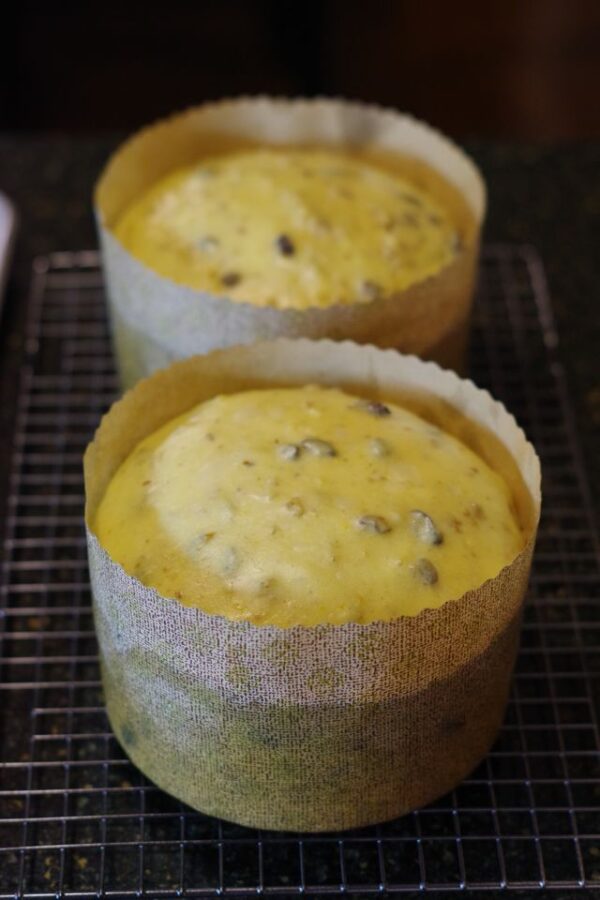
- Score each panettone with a cross shape, place a knob of butter in the center of the cross.
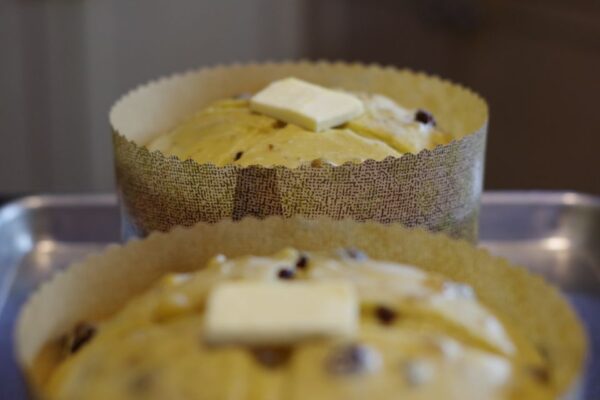
- Bake at 177°C(350°F) in prewarmed oven, rack in the lower 1/3 of the oven for 45 minutes or until internal temperature reaches 92°C (198°F).
- Insert two sharp skewers through the very bottom of each mold, carefully flip upside down and and let rest on prepared supports. Let cool for about 10 hours. Note: Due to their delicate structure, panettones have to be cooled off in this way in order to preserve their shape.
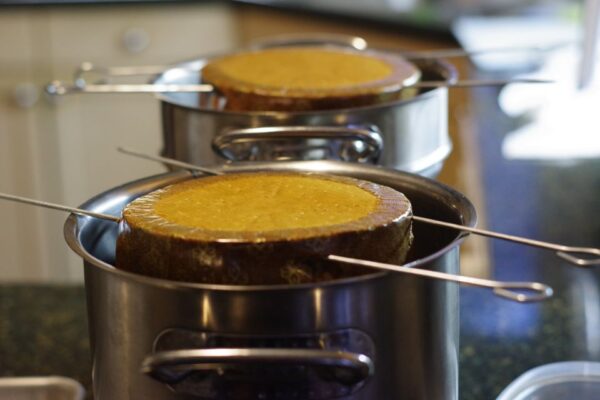
- Store each panettone in a separate cellophane bag. Spray lightly inside the bag with 70% ethyl alcohol before inserting panettone and sealing the bag.
- Let panettone rest for minimum of 3-4 days to let the flavours mature. Cut with sharp serrated knife. Due to its tender structure it is advisable to cut panettone in half first and then into separate smaller slices.
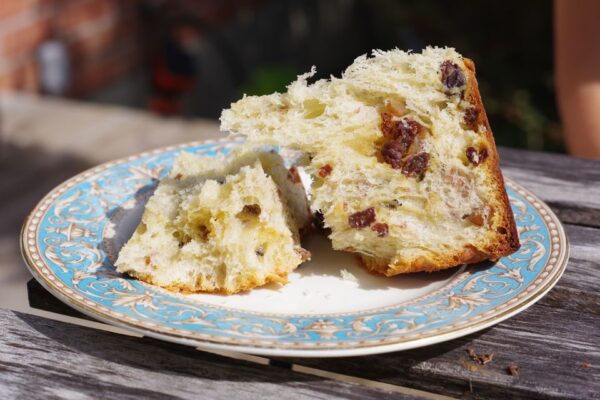
- Keep panettones in a dry and cool place 12-18°C (54-65°F). If left whole and stored properly, the panettone will stay fresh and moist for about 4 weeks.

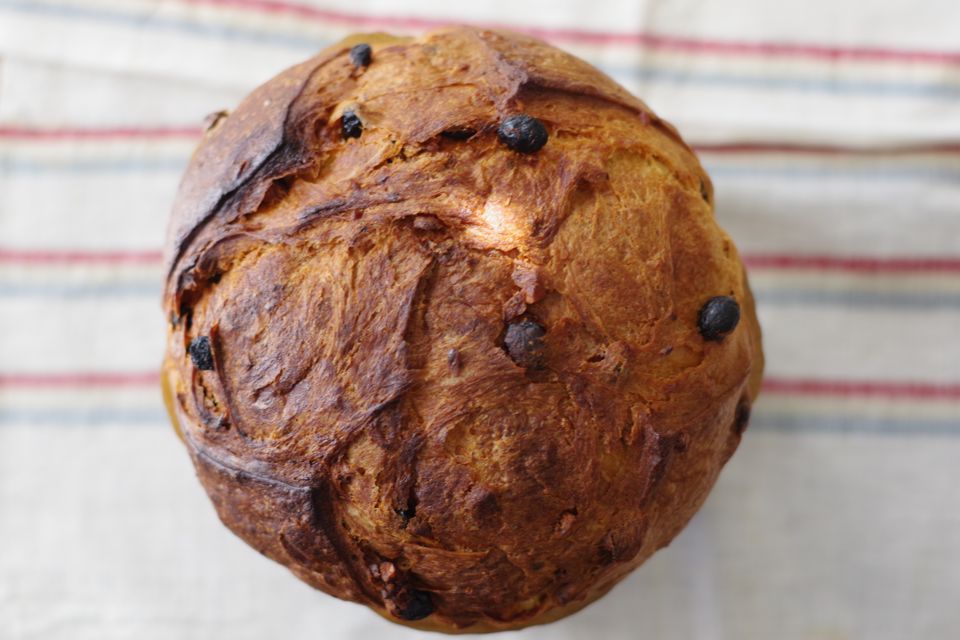

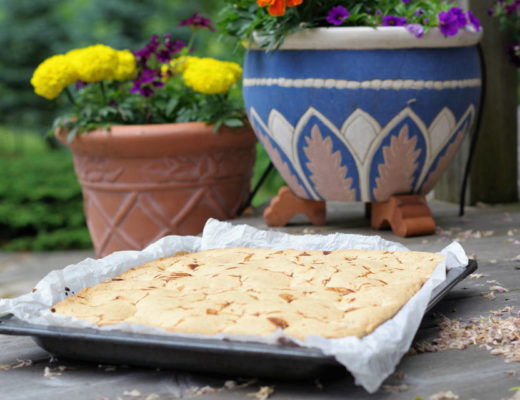
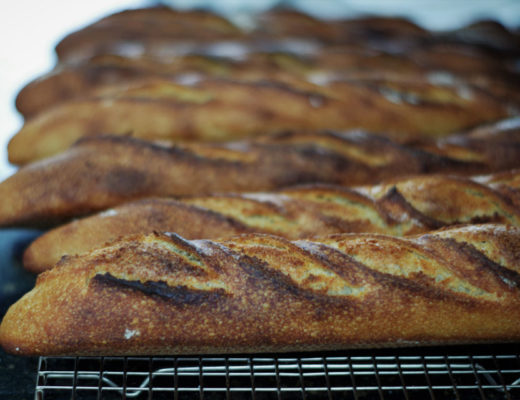
2 Comments
Natasha
January 6, 2025 at 12:39 amThank you for this wonderful recipe! My panettone turned out very well. It’s a long process to make it, but so worth it!
Gordan
January 7, 2025 at 9:17 pmI am so happy to hear that! Thank you for your message!